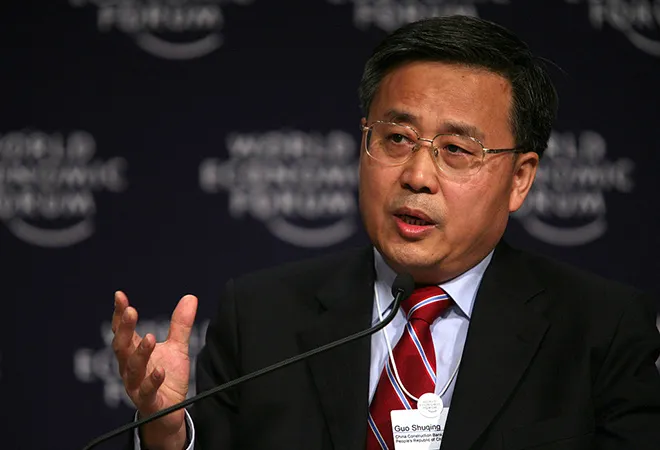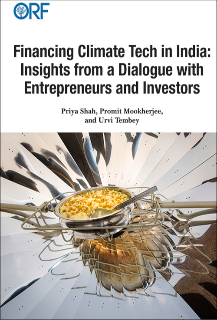
The US Department of Commerce (DoC) Fact Sheet lists the trade and economic provisions of the Sino-American trade agreement that was concluded following Chinese President Xi Jinping’s visit to the US on 6-9 April. The agreement was concluded on 11 May 2017. This agreement, titled 100 Days Plan on Trade and Investment has become a seminal document for the two nations' trade and economic relations during the Trump dispensation.
The US-China talks and the agreement became important primarily because of President Donald Trump's vituperation against the 'Chinese economy dominating the US economy' with the help provided by the latter to China's economy over decades, that in turn Beijing seeks to dominate now.
What does the agreement hold that has Trump gushing over? While the meat and potato part of the agreement is really about two products — American beef and cooked Chinese fowl — the real part, however, is how Trump has managed to get his feet into the door to the burgeoning financial services sector of China. Two fully owned US credit rating agencies and two financial underwriting agencies will be soon opening their shop in China.
In the text of the Fact Sheet, the DoC has acknowledged that Beijing has to undertake two concessions in the sector:
- By 16 July 2017, China is to allow wholly foreign-owned financial services firms in China to provide credit rating services, and to begin the licensing process for credit investigation.
- "China is to issue both bond underwriting and settlement licenses to two qualified US financial institutions by 16 July 2017."
Since 19 April this year, China's Banking Regulatory Commission (CBRC) has a new chief, Guo Shuqing. In the next 12 days, he has issued a slew of seven 'policy directives' — actions that have been described by Xinhua as a "regulatory windstorm."
The banking system in China was once dominated by the monolithic People's Bank of China (PBC) which in the 1980s became a Central Bank, like the US Federal Reserve or India's Reserve Bank of India (RBI). This was also the time when four sectoral banks were established under the aegis of the State. Additionally, the banking system was 'opened up.'
A small comparative statistic will give us the fuller picture of the post-2008 situation of this system. Dr. Paresh Kumar Narayan of Deakins University, Canada, wrote in a paper that "The number of banking institutions in China has declined from 8,721 (2007) to 3,639 (2010). However, the value of total assets has almost doubled from 51.6 trillion RMB (Renmenbi) to 93.2 trillion RMB, and its share of GDP has increased from 194.2% to 234.2% over the corresponding period. On the other hand, the number of non-banking financial institutions (NBFI) has increased from 690 (2007) to 782 (2010), contributing around 33.1% to GDP with total assets valued at 13.2 trillion RMB."
Rise in the number of NBFIs has increased the size of the financial sector because of the rise of exotic and complex financial instruments being provided for creating financial wealth. The $7 trillion Chinese bond market has been plagued by defaults. Foreign investors were therefore chary of investing in those papers because they had little faith in the Chinese domestic ratings agencies.
Reuters had reported in end-2016 that the Chinese Ministry of Commerce and the prestigious governmental reforms agency, National Development and Reform Agency (NDRA), had announced they would welcome some of the international rating agencies. Creating conditions for competition will be the immediate need of the rating agencies in a market where the bonds are often supported by sovereign guarantees.
Thus, Trump's breakthrough in making Xi Jinping agree to allow two wholly foreign owned rating agencies will go down as a way of mollifying many of the foreign investors. These investors now feel they are losing out in the profits from the huge multi-trillion dollar bond market in China.
The other provision is about having banking and insurance institutions of the US banks taking on underwriting and settlement issues. In the case of insurance underwriting, most of the reinsurance is done by the state-controlled 'China Re', a subsidiary of People's Insurance Company of China (PICC). Clearly, after disposing off the beef issue, President Trump decided to show preference for Wall Street.
Writing in The Geneva Papers for Risk and Insurance, a Chinese author had stated that at the moment, the State Council — the cabinet of ministers — decides in favour of one international underwriter from each of the major countries. The idea is that the companies have to show a "commitment to the long term growth of the nation."
President Trump has managed to get assurance from Xi that two underwriters of American origin will be able to open shop in China. But what is of more value in geopolitical terms is Xi's reaction to the Mar-a-Lago summit, at its end. "We have a thousand reasons to get China-US relations right, and not one reason to spoil the China-US relationship," Trump huffed and puffed and got a few deals going for his friends on Wall Street, while on the Main Street, Xi still held the cards.
The views expressed above belong to the author(s). ORF research and analyses now available on Telegram! Click here to access our curated content — blogs, longforms and interviews.




 PREV
PREV


